Name Robert Burns | ||
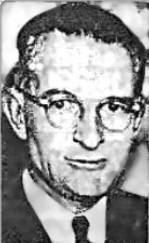 | ||
Books I Am a Fugitive from a Georgia Chain Gang! | ||
Sunt un evadat - Robert Elliott Burns
Robert Elliott Burns (May 10, 1892 – June 5, 1955) was a World War I veteran who gained notoriety after escaping from a Georgia chain gang and writing his memoirs, I Am a Fugitive from a Georgia Chain Gang!, exposing the cruelty and injustice of the chain gang system.
Contents
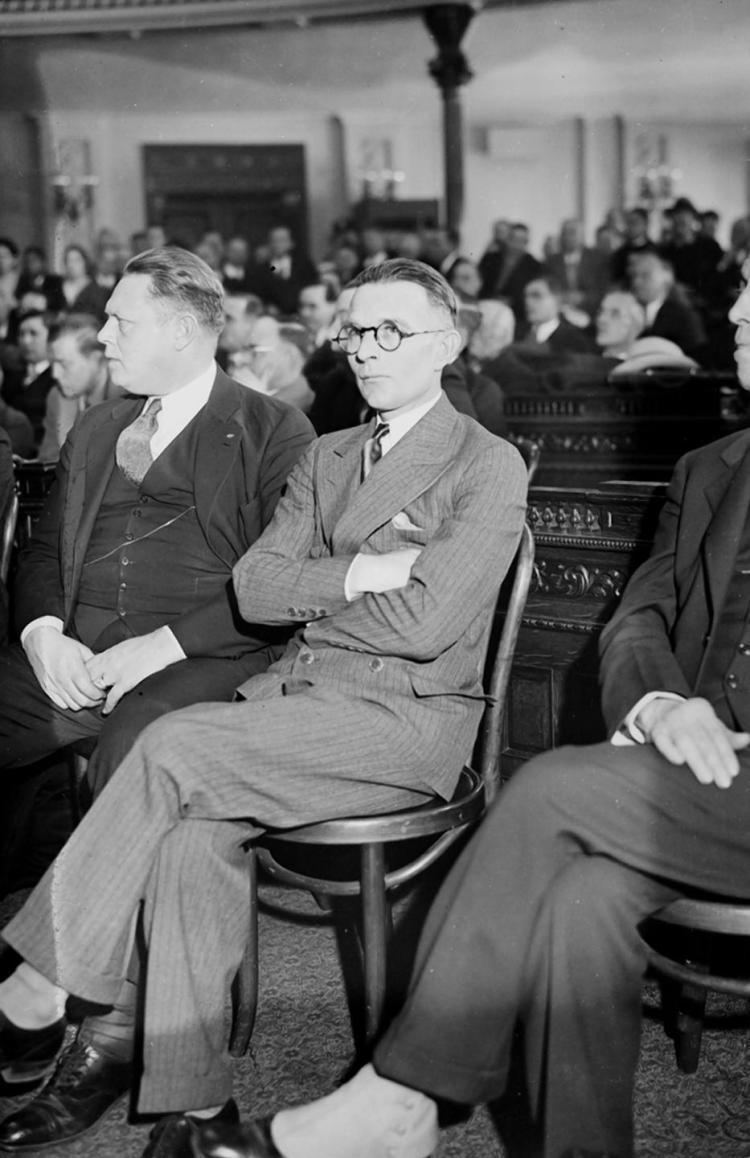
Biography
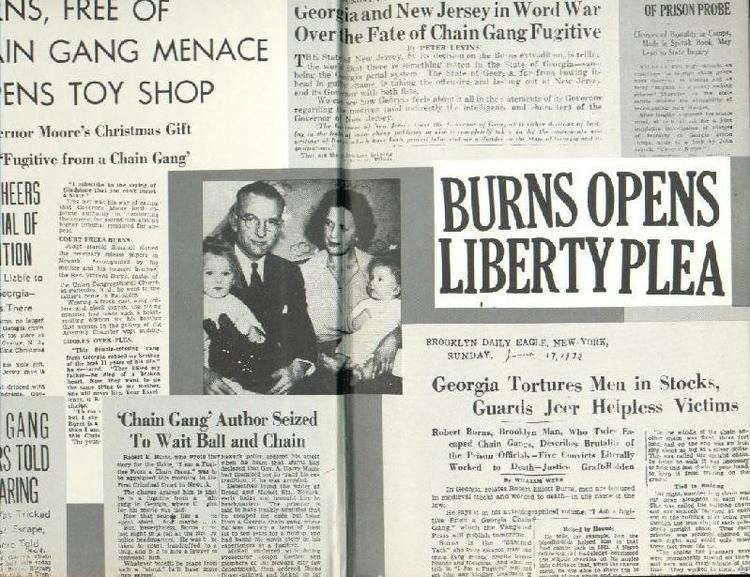
Robert Burns was born in Palisades, New Jersey. In 1912, he had left his family and drifted throughout the United States as a laborer. Two days after the United States entered World War I on April 6, 1917, he enlisted in the Army as a medic. As a medic, Burns was present for many of America's major engagements in World War I including the Battle of Chateau-Thierry and the Battle of St. Mihiel. Upon his return from Europe, suffering deeply from what his brother, Vincent Burns, deemed "a typical shell-shock case." His deteriorating psychological condition coupled with his inability to recover his pre-war job, or the wages he was earning, caused Burns to become a drifter once again.
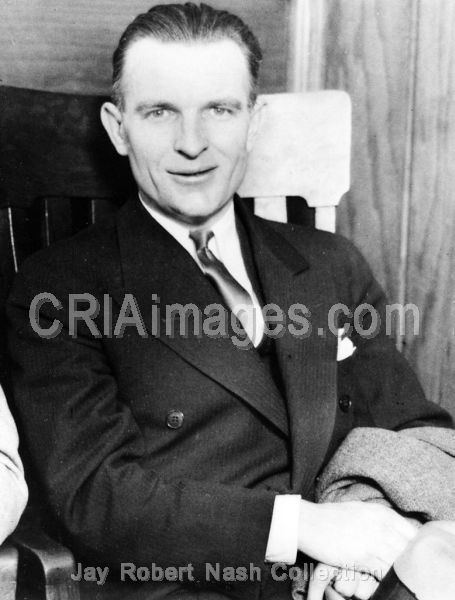
Burns eventually ended up in Atlanta, Georgia, in 1921. It was in Atlanta that Burns was tricked into participating in a robbery of a grocery store which netted the participants a total of $5.81. For this crime, Burns was sentenced to six to 10 years of hard labor on a Georgia chain gang. In 1921, since Georgia did not have a state prison, Burns was sentenced to a different kind of prison system: convict leasing. As a member of Georgia's convict lease system, Burns was forced to complete back-breaking labor for the profit of the state. As a prisoner of the convict lease system, Burns was forced to endure the most inhumane of conditions: endless labor, inadequate shelter, constant beatings, and insufficient food.

Burns escaped from the chain gang with the help of another inmate who struck his restraints with a sledgehammer, bending and weakening them. He was able to escape the eyes of the guards while they thought he was taking his five-minute rest. After evading capture, Burns made his way to Chicago, where he eventually became the editor and publisher of Greater Chicago Magazine. In this magazine he published articles about his life as a member of a Georgia chain gang and the brutality he was forced to endure. During his stay in Chicago, he became involved with a divorcee named Emily Del Pino Pacheco, from whom he rented a room. She supported Burns in his real estate plans and helped him set up his magazine with her savings. They married in 1926.
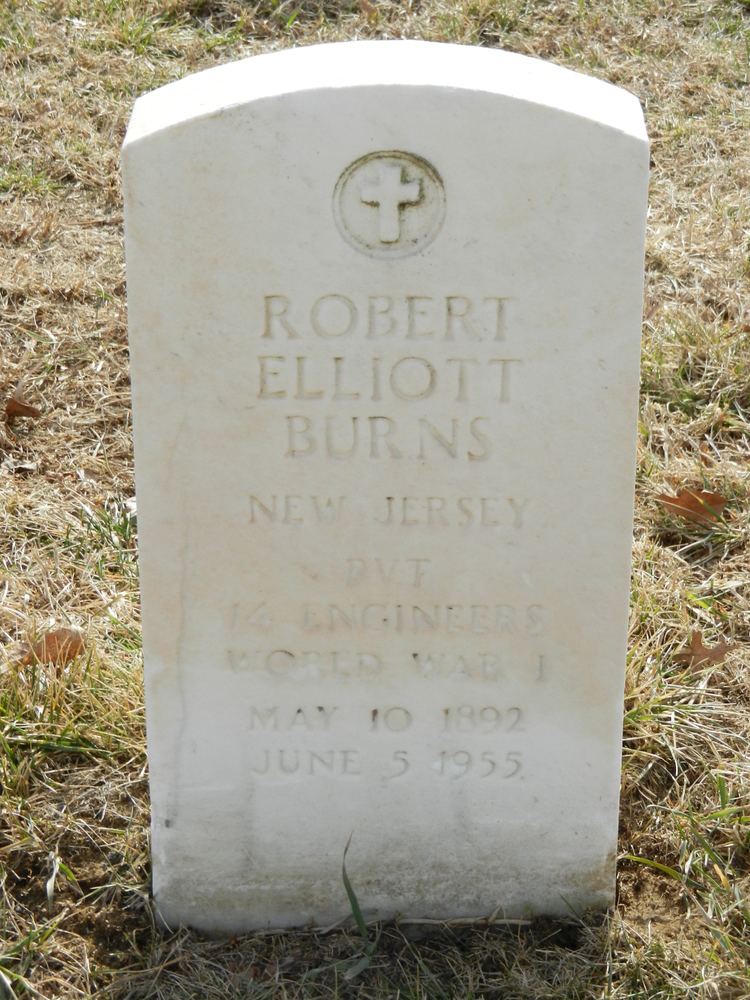
Three years later, he sought a divorce in order to marry Lillian Salo, who, at twenty-two, was sixteen years his junior. His wife sued for divorce. Within a month he was apprehended pending extradition back to Georgia. Burns claimed that his wife had been responsible for the anonymous letter that tipped off authorities there, but she denied it. Owing to his status in the community, many people helped him fight extradition to Georgia. In spite of this help and much support from all around the country, the ruling went against him.

Burns returned to Georgia in June 1929 to finish his prison term. After initially serving in Campbell County Camp where he was given relatively light work as a painter, he was transferred to Troupe County Prison Camp and worked on the roads, which was much tougher. He wouldn't be entitled to apply for parole until a year after his return. After several failed attempts at parole, on September 4, 1930, Burns again escaped. He had waited until he had earned enough of the guards' trust that he could obtain the privilege of not being chained. He then paid off a local farmer with money he had received from his brother in Newark, and headed to New Jersey.
Burns could not duplicate his Chicago success in New Jersey, due to the Great Depression. He took on odd jobs around New Jersey for a few years, all the while writing his autobiography, I am a Fugitive from a Georgia Chain Gang!
In January 1932, a cinematic version of Burns's autobiography was released by Warner Bros. under the slightly altered title, I Am a Fugitive from a Chain Gang, starring Paul Muni. Burns was a consultant on the set of the film. According to The New York Times, the movie was "an exciting, thrilling tale" that "shocks and horrifies." The success of the movie led Burns to make more and more public appearances condemning the use of chain gangs in the South. Burns's increased public appearances led to his re-arrest in Newark in December 1932. However, the governor of New Jersey refused to extradite him, since his book and a movie had been released and public opinion was firmly against the idea.
In 1943, Burns met newly elected Georgia governor Ellis Arnall in New York and requested a pardon. Arnall had Burns return to Georgia in November 1945 to face the parole board, standing by Burns's side as his counsel. The board commuted Burns's sentence to time served.
Burns lived as a free man until his death from cancer in 1955. His book falls into a long, American tradition of reform literature meant to spur the American public to opposition of an issue. Some examples of this literature are Uncle Tom's Cabin and The Other America. Burns's book and subsequent movie are largely credited with the abolition of the chain gang system in the South.
Book
Media portrayals
His book has been made into two movies:
